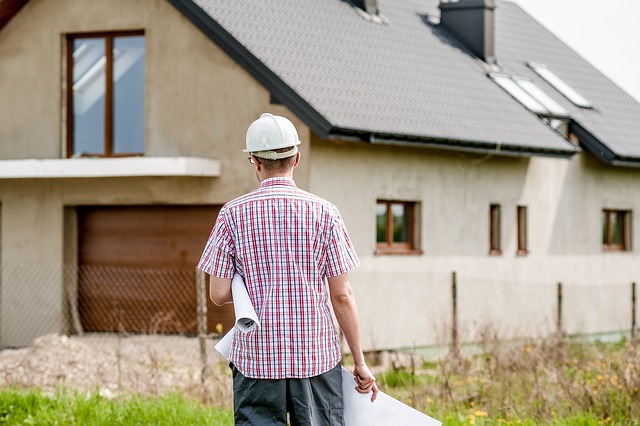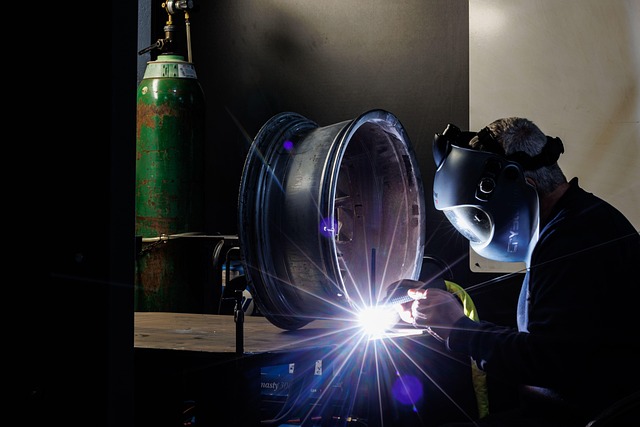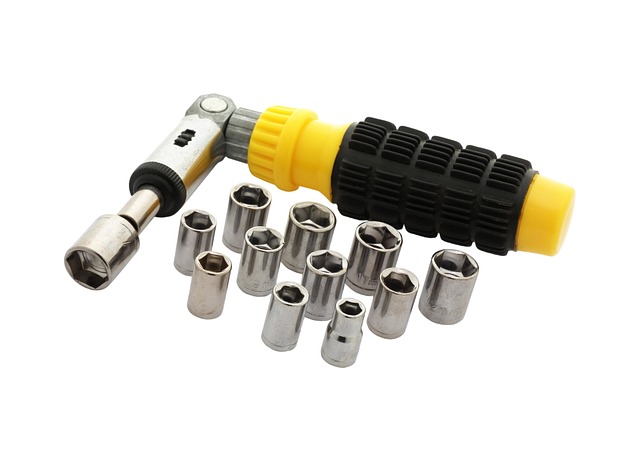Window replacement is a vital aspect of effective home repair and maintenance, addressing wear, damage, and inefficiency that can lead to drafts, high energy bills, and reduced comfort. Upgrading to modern windows offers significant advantages such as improved energy efficiency, reduced noise pollution, enhanced indoor air quality, and quieter living spaces, contributing to increased home comfort and value. Choosing the right windows involves understanding types (single-hung, double-hung, casement, bay, bow, fixed) and materials (vinyl, fiberglass, wood, aluminum) based on aesthetic and functional benefits. Energy-efficient windows with high R-ratings are a strategic investment, while professional installation ensures secure fits and leak prevention through precise steps and advanced weatherproofing materials. DIY enthusiasts may install windows in smaller homes or basic models, but thorough research, proper tools, and advice are essential. Regular maintenance, like cleaning tracks and lubricating parts, enhances window performance as part of overall home repair and maintenance efforts.
“Enhance your home’s comfort and energy efficiency with expert guidance on window replacement and installation. This comprehensive guide navigates the essential aspects of home repair and maintenance, from understanding the necessity and benefits of replacing windows to choosing the right types and materials for optimal energy savings.
Learn about the installation process, including practical tips for hiring professionals or considering DIY options. Take control of your home’s indoor comfort, security, and style with these insightful steps.”
- Understanding Window Replacement: Why It's Necessary and Benefits for Your Home
- Choosing the Right Windows: Types, Materials, and Energy Efficiency
- The Installation Process: Steps, Tips for Hiring Professionals, and DIY Considerations
Understanding Window Replacement: Why It's Necessary and Benefits for Your Home

Window replacement is an essential aspect of home repair and maintenance, offering numerous benefits for homeowners. Over time, windows can become worn, damaged, or inefficient, leading to various issues like drafts, increased energy bills, and reduced home comfort. Old or poorly installed windows may also contribute to security risks, as they might not provide adequate protection against break-ins.
By replacing these windows with modern alternatives, homeowners can enjoy improved energy efficiency, reduced noise levels, and enhanced indoor air quality. Newer window models often feature advanced sealing mechanisms and insulated frames, which help maintain a consistent indoor temperature, lower utility costs, and create a quieter living environment. This is particularly beneficial for those seeking to improve the overall comfort and value of their homes as part of ongoing repair and maintenance routines.
Choosing the Right Windows: Types, Materials, and Energy Efficiency

Choosing the right windows is a critical aspect of home repair and maintenance, offering both aesthetic and functional benefits. When considering window replacement or installation, the first step is to understand the types available in the market. Options include single-hung, double-hung, casement, bay, bow, and fixed windows, each with unique opening mechanisms and design features. Single-hung windows, for instance, are the most common, featuring a lower sash that slides up and down, while casement windows operate on hinges at one side, opening outward like doors.
Materials play a significant role in energy efficiency and durability. Modern windows often come with advanced coatings and treatments to reduce heat transfer, improve insulation, and minimize UV damage. Vinyl and fiberglass are popular choices due to their low maintenance, stability against extreme temperatures, and excellent insulation properties. Wood windows offer natural beauty but require more upkeep, while aluminum frames are durable yet conduct heat readily. Selecting energy-efficient windows with high Insulation Values (R-ratings) can significantly impact your home’s comfort levels and reduce utility bills, making it a crucial investment in home repair and maintenance.
The Installation Process: Steps, Tips for Hiring Professionals, and DIY Considerations

The installation process for new windows involves several steps, from measuring and preparing the opening to inserting the window frame and sealing it in place. It’s a detailed task that requires precision and expertise to ensure energy efficiency and prevent leaks. Professionals use specialized tools and techniques, guaranteeing a secure fit. They start by removing the old window, assessing the opening, and fitting the new frame, often with advanced weatherproofing materials to keep out drafts and moisture.
When considering window replacement, hiring professionals is advisable for a seamless experience. Their knowledge of local building codes and their access to high-quality materials can prevent costly mistakes. However, DIY enthusiasts may find it rewarding to install windows themselves, particularly in smaller homes or with basic models. Researching the process, gathering the right tools, and seeking advice from online resources or experienced friends can help ensure a successful project. Regular maintenance, such as cleaning tracks and applying lubricant, contributes to long-lasting window performance, enhancing home repair and maintenance efforts.
When it comes to enhancing your home’s comfort, energy efficiency, and curb appeal, window replacement is a significant investment in your property. By understanding the necessity and benefits of this process, selecting the right windows tailored to your needs and budget, and either hiring professionals or tackling the project yourself, you can ensure a successful window replacement that contributes to your home repair and maintenance efforts.














